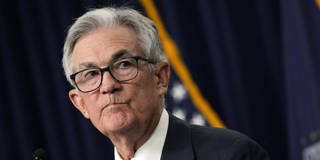From the inflation hawks who warned against government stimulus programs to the progressives who decried the Federal Reserve’s interest-rate hikes, pretty much everyone has misunderstood recent US macroeconomic indicators. To see what is really going on, we need to dispense with defunct models and orthodox assumptions.
AUSTIN – Back in 2021 and early 2022, a posse of prominent economists – including Lawrence H. Summers, Jason Furman, and Kenneth Rogoff, all of Harvard – criticized the Biden administration’s fiscal and investment program, and pressured the US Federal Reserve to raise interest rates. Their argument was that inflation, fueled by federal spending, would prove “persistent,” requiring a sustained shift to austerity. Unemployment, sadly, would have to rise to at least 6.5% for several years, according to one study touted by Furman.
While this trio (and many like-minded commentators) failed to sway the White House or Congress, they were in tune with Fed Chair Jerome Powell and his colleagues, who began hiking interest rates in early 2022 and have kept at it. The Fed’s rapid monetary-policy tightening soon prompted progressives, led by Senator Elizabeth Warren of Massachusetts, to fear that it will trigger a recession, mass unemployment, and (though they didn’t say it) a Republican victory in 2024.
But the macroeconomic situation today has confounded both positions. Contrary to those advocating austerity, inflation peaked on its own in mid-2022 (owing partly to sales from the US Strategic Petroleum Reserve). There was no persistence, no surge from the 2021 fiscal stimulus, and no wage-driven inflation from low unemployment. The models and historical precedents that the Harvard trio had relied on clearly no longer apply (if they ever did).

AUSTIN – Back in 2021 and early 2022, a posse of prominent economists – including Lawrence H. Summers, Jason Furman, and Kenneth Rogoff, all of Harvard – criticized the Biden administration’s fiscal and investment program, and pressured the US Federal Reserve to raise interest rates. Their argument was that inflation, fueled by federal spending, would prove “persistent,” requiring a sustained shift to austerity. Unemployment, sadly, would have to rise to at least 6.5% for several years, according to one study touted by Furman.
While this trio (and many like-minded commentators) failed to sway the White House or Congress, they were in tune with Fed Chair Jerome Powell and his colleagues, who began hiking interest rates in early 2022 and have kept at it. The Fed’s rapid monetary-policy tightening soon prompted progressives, led by Senator Elizabeth Warren of Massachusetts, to fear that it will trigger a recession, mass unemployment, and (though they didn’t say it) a Republican victory in 2024.
But the macroeconomic situation today has confounded both positions. Contrary to those advocating austerity, inflation peaked on its own in mid-2022 (owing partly to sales from the US Strategic Petroleum Reserve). There was no persistence, no surge from the 2021 fiscal stimulus, and no wage-driven inflation from low unemployment. The models and historical precedents that the Harvard trio had relied on clearly no longer apply (if they ever did).